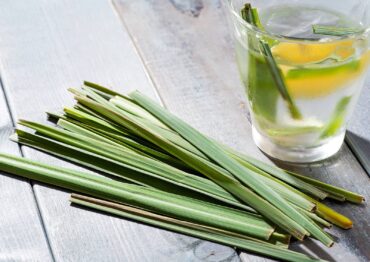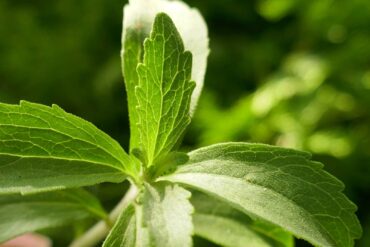
There is nothing better than drinking a delicious cup of tea. Except drinking a cup made from plants grown in your own garden. Ditch the classics and get ready for your new home-grown favorites.
1. Lemon grass
Towering in the garden, lemongrass is truly a unique plant. Its stems create an oil rich in lemony flavor. Brew it in hot water and add to your Arnold Palmer (combination of iced tea and lemonade) for a fresh, zany taste.
To harvest:
- Cut lemongrass stalks. Be careful, as the leaves are sharp and can give unexpected papercuts.
- Stalks can be air-dried, dried in the oven at low heat, or put in a dehydrator.
To use:
- Place 3 pinches (depending on your taste) of fresh lemongrass leaves in a teapot or teacup. Steep for 3 minutes.
- Blend lemongrass with calendula to aid digestion.
2. Anise hyssop
Native to the mint family, anise hyssop is the perfect combination to go with straight peppermint or spearmint leaves. Need a new addition for an after-dinner tea? Anise will take the gold — its licorice flavor will bring a new dimension to your favorite bedtime cup. Use the leaves and flowers fresh or dried.
To harvest:
- Harvest anise leaves at any time during their growing season to use fresh.
- Or wait for the flowers to bloom in June and July and use both the flowers and the leaves.
To use:
- Tear 2-3 leaves into boiled water and steep for 10 minutes.
- Blend with rose hips to help with coughs and colds.

3. Stevia
A natural sweetener, stevia is cultivated all over the world, but growing your own will make it that much sweeter.
To harvest:
- Harvest stevia leaves before flowering to use fresh.
- Dry the leaves by hanging them in a cool, dark place.
To use:
- Pinch 5-6 leaves into boiled water and steep for 3 to 4 minutes.
- Blend with mint, lemon balm, rose hip and sage to create the perfect summer drink.
4. Cinnamon basil
Yes, you read that right. Cinnamon basil is a basil plant that tastes like cinnamon. With dark green leaves and stunning purple flowers, it’s a show-stopper in any garden. (It’s perfect in fresh flowered bouquets, too.) In tea, it’s a favorite basil to use. Why? Because it doesn’t taste like you’re drinking pesto — instead, you are drinking a spiced cinnamon tea.
To harvest:
- Harvest cinnamon basil leaves at any time during their growing season to use fresh.
- Flowers will bloom in June and July, when you can use both flowers and leaves in your tea.
To use:
- Tear 2 stems with leaves into boiled water and steep for 3 minutes.
- Use to help with digestion.
5. Echinacea
Bring an earthy taste to the summer months with echinacea tea.
To harvest:
- Harvest flower heads when they first start to open.
- Echinacea roots and leaves may also be used to make tea.
To use:
- Steep flowers, leaves and roots for 15 minutes.
- A popular remedy for colds, flu and other infections, echinecia it is thought to help boost immunity.
6. Lavender
Lavender is having its time in the sun. It’s everywhere from flower crowns to lemonades and its distinctive scent is found in soaps and massage oils. Lavender tea has been used for centuries in traditional medicine to boost mood and enhance calm. Create your own sip of paradise.
To harvest:
- Harvest fresh lavender at any time during the growing season. Also include the lavender flowers when in bloom.
- Dry lavender flowers and leaves for winter tea.
To use:
- Steep flowers and leaves for 10 minutes.
- Beneficial in aiding restless sleepers.
7. Calendula
One of the oldest cultivated flowers, calendula dates back to Roman times. Whether it’s beautiful, fresh arrangements or pops of color in the garden, calendula will also be a much-loved addition to your tea assortment with its earthy, peppery bite.
To harvest:
- Harvest calendula flowers regularly during the growing season for consistent flowering.
- Pick the petals off of the flowers to make dry tea.
To use:
- Steep fresh flowers or a pinch of dried petals in boiling water for 4 minutes.
- Calendula is high in vitamin C and good for the digestive system.
8. Violet
A hidden delight in your garden, these flowers make the perfect pairing to any tea. Believed to comfort and strengthen the heart, violets have a sweet floral taste that’s perfect for any warm cup of tea.
To harvest:
- Flowers will bloom during spring and fall.
- Once in full bloom, pinch off the flowers with your fingertips.
To use:
- Steep flowers and leaves for 3 minutes.
- Blend with myrtle to help sinus discomfort.
9. Dianthus
In the peak of summer, dianthus stuns gardens with its beautiful blooms. The flowers remind me of little carnations ready to be picked for posey bouquets. Not just a beautiful flower, but a sweet taste, similar to cloves in tea.
To harvest:
- Harvest flowers in spring and summer when in bloom. To promote new growth and more blooms, prune back the plant in early spring.
- Dry flowers for delicious tea throughout the year.
To use:
- Steep flowers for 5 minutes.
- Blend with cinnamon for a holiday tea treat.
10. Dahlia
With a range of colors, dahlias make a killer statement piece in any garden. Their delightful taste makes a great summer tea.
To harvest:
- Cut when blooms are three-quarters of the way open, but not overly ripe. You are looking for firm and lush petals versus papery ones.
- Dry dahlia flowers to make tea throughout the winter months.
To use:
- Steep flowers for 3 minutes.
- Blend with calendula or other summer flowers to create a wonderful summer drink.
This post is provided as an educational and inspirational service of the National Garden Bureau and its members and was first published at ngb.org. NGB does not wish to advise or recommend herbs for medicinal or health use. Please consult a healthcare professional before considering any herbal treatments.




























